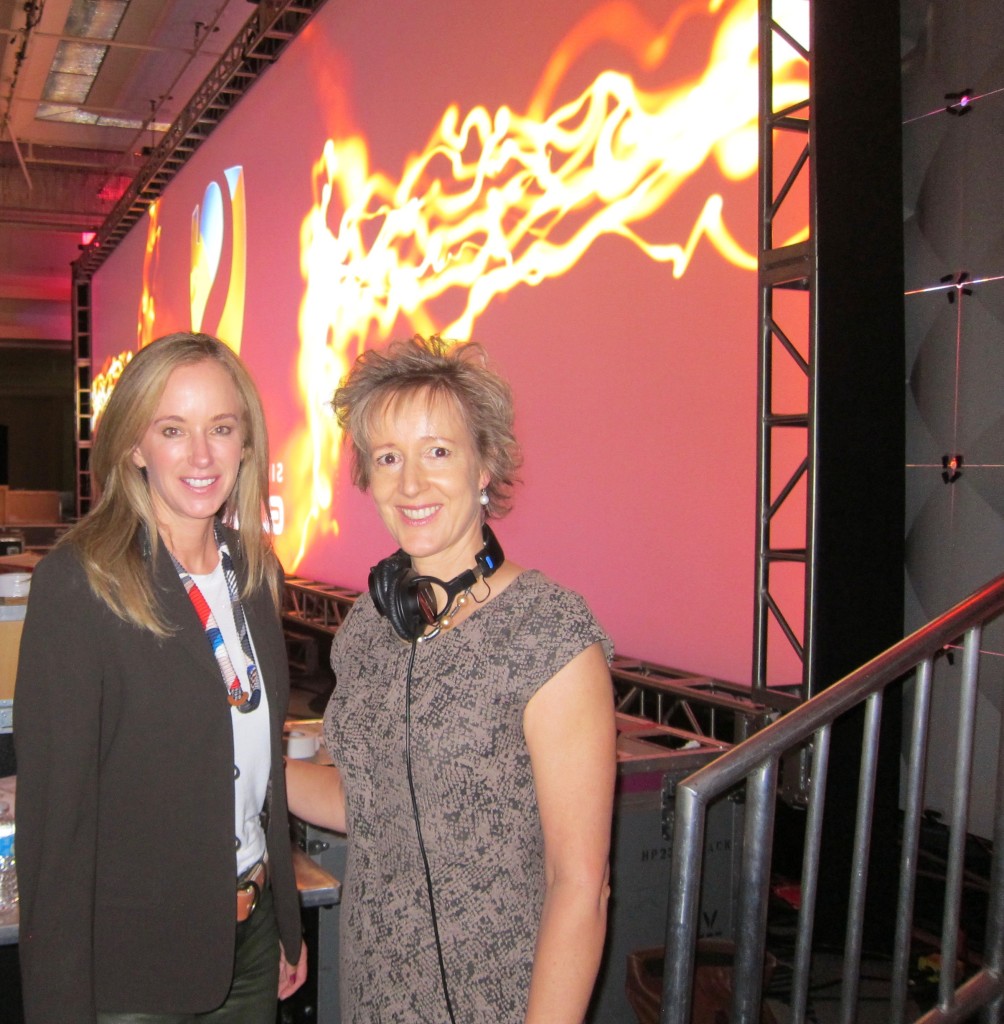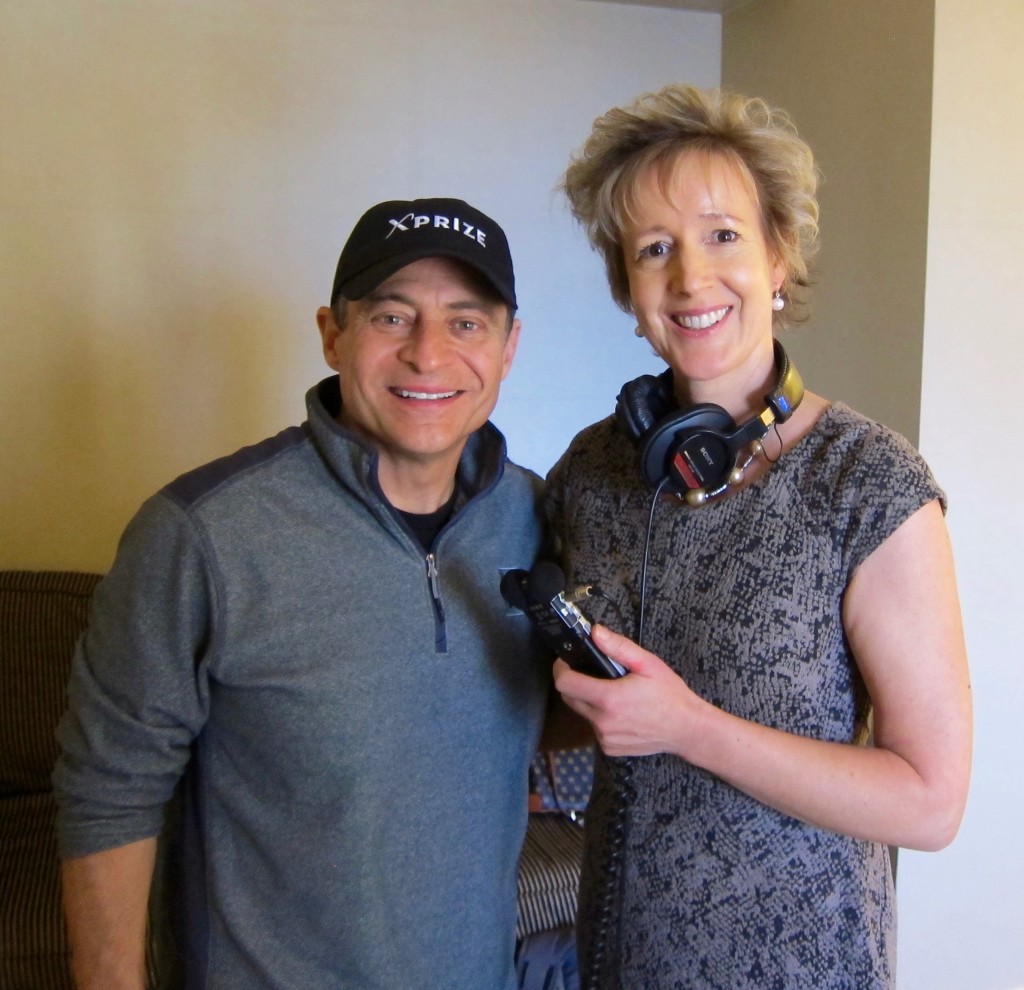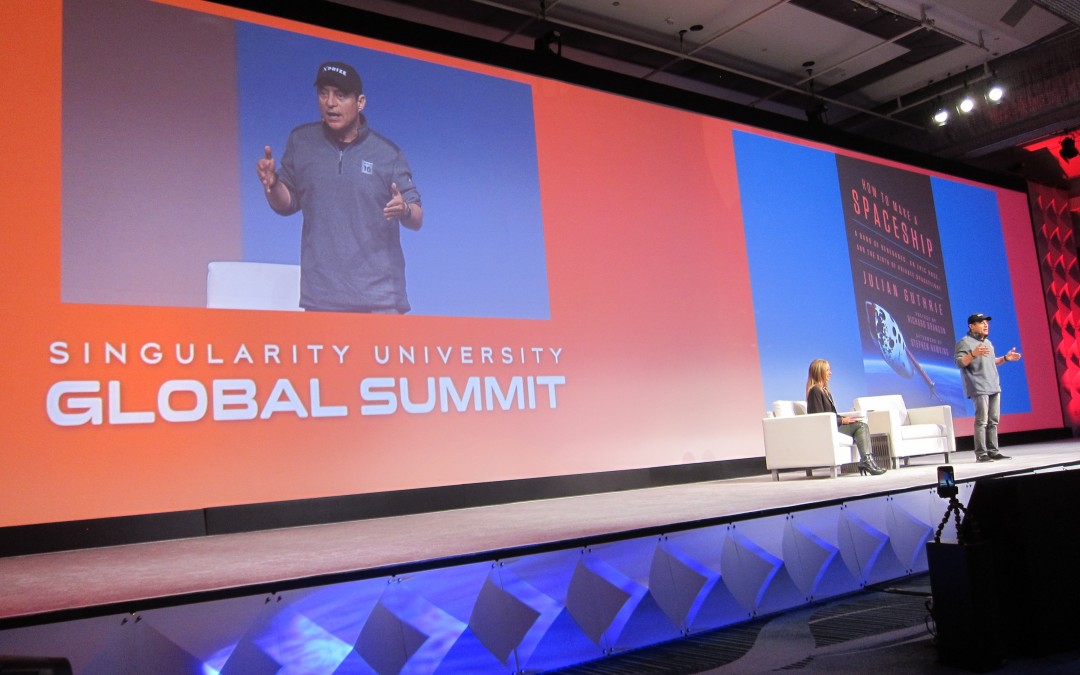By Alison van Diggelen, host of Fresh Dialogues
In 1996, space enthusiast, Peter Diamandis announced the $10 Million XPrize for the first private spaceship to fly 100 kilometers into space. The only problem was: he didn’t have $10 Million, not even close! Nevertheless, his audacious challenge inspired dozens of teams all over the world to compete and he did eventually find a sponsor…and a winning team. The dramatic story that helped jumpstart the private space race is told in Julian Guthrie’s new book “How to Make a Spaceship” which comes out on September 20th. The book has a foreword by Virgin’s Richard Branson and afterword by superstar scientist, Stephen Hawking.
I interviewed Julian and Peter at the Singularity University Summit and they shared their unique insights into the band of renegades who finally succeeded in winning the XPrize. Peter talked about how he was inspired by Charles Lindbergh’s historic transatlantic flight to win a $25,000 prize. Today, this original XPrize has spawned many others. Over $80 Million in XPrizes continue to drive tech innovation in energy, education, medicine and space exploration.
“This incentive challenge really touched a nerve globally and brought out this entrepreneurial spirit internationally. You had people taking big risks and sacrificing a huge amount…They were fueled by their own passions and obsessions, and dismissed their own fears and naysayers. There’s a lot of bravery in what was done.” Author Julian Guthrie
Last week, the BBC’s Tech Tent aired my interview with Peter. Listen to the podcast excerpt:
.

Backstage with Julian Guthrie, author of “How to Make a Spaceship”
Here’s a transcript of the introduction and report:
BBC’s Rory Cellan-Jones: It’s 20 years since a space-obsessed entrepreneur called Peter Diamandis launched a $10M to stimulate private space flight. The XPrize spurred dozens of teams around the world to compete for the money and the glory and today the private space industry is one of the most exciting – and risky – sectors of tech innovation. This whole story is told in “How to Make a Spaceship” published later this month.
We asked the Silicon Valley journalist, Alison van Diggelen, to interview Peter Diamandis. He told her why he’s glad Virgin’s Richard Branson turned him down as a sponsor for the first XPrize.
Peter Diamandis: I pitched Richard (Branson) twice. I thought he was the perfect person to do this…The fact that he didn’t fund it and make it the Virgin XPrize, which could’ve been a cool name, led him to the point that when the $10M Ansari XPrize was ultimately won, Richard came in and bought the rights to the winning technology to create Virgin Galactic. So instead of spending $10 million on the prize purse, he spent quarter of a billion dollars developing Virgin Galactic….which I was very happy about.
Alison van Diggelen: Let’s talk about the Cambridge physicist, Stephen Hawking. He wrote (in) the afterword for your book: “The human race has no future if it doesn’t go to space.” Can you explain what he meant by that?
 Peter Diamandis: I had a chance to meet Prof Hawking through the XPrize. We’re actually working right now on an ALS XPrize…. When I met him back in 2007 I invited him to fly on a zero G flight. It was amazing to give the world’s expert on gravity the experience of zero gravity…He was asked why he was doing something kind of risky…for someone in a wheelchair…that frail, it could be dangerous.
Peter Diamandis: I had a chance to meet Prof Hawking through the XPrize. We’re actually working right now on an ALS XPrize…. When I met him back in 2007 I invited him to fly on a zero G flight. It was amazing to give the world’s expert on gravity the experience of zero gravity…He was asked why he was doing something kind of risky…for someone in a wheelchair…that frail, it could be dangerous.
He said:
“I want to promote space travel… If the human race doesn’t go into space, we don’t have a future.” Stephen Hawking
His concerns are the existential threats of nuclear war, killer virus, asteroid impact…I’m an optimistic guy. I think we have a bigger future if we go into space. The concept that Richard Branson, Elon Musk, Larry Page, Stephen Hawking, myself…that we talk about is the notion that: It’s time to make the earth a multi-planetary species…that we can back-up the biosphere. We have the ability to take all the knowledge, all of the genomes on this planet…and to take all the eggs out of one basket…
Alison van Diggelen: And talk about the technology. Some are saying: OK the private sector has entered the space race but we’re not any further forward than when man landed on the moon with NASA (Apollo missions). Talk about how the technology has changed with the private sector on a much more limited budget and a faster timetable.
Peter Diamandis: It’s astounding how fast the technology has changed. It’s night and day. It doesn’t come out of the large industrial military complex, which is risk averse, it comes out of an entrepreneurial mindset that’s willing to do something completely different. I give credit to Elon Musk and a team at SpaceX. They’ve pulled off the impossible. They’ve built the Falcon 9 launch vehicle which has a fully reusable first stage which could drop the cost of launching satellites into space by a factor of 5.
There’s sensors on board, there’s 3D printing engines on the vehicle. You’re mass manufacturing everything in house. You’re using the latest materials, machine learning, and AI protocols for design. You’re able to create a vehicle that was never heretofore possible.
This is for me is the most exciting time ever to be alive.
Bonus Material (these make the final cut)
Alison van Diggelen: Instead of thinking out of the box, you’re saying you should “think in a small box.” Explain that rationale.
Peter Diamandis: In Julian Guthrie’s book “How to make a spaceship” I demonstrate this. I said: This competition is over on Dec 31 2004. It’s not any spaceship to any altitude. It’s 3 people to 100km. You have to land and in two weeks do it again.
When you’re able to constrain the problem that’s when people can innovate. It gives them the ability to throw out all old ways of thinking and really innovate with something new.
Alison van Diggelen: What stimulated all this spaceship innovation?
Julian Guthrie: Innovations came from very unexpected places: entrepreneurs…these scrappy teams. Small teams can do big things and in this case they can make history. They have the ability to fail and then to move forward very quickly, and test new things. You’re not dealing with bureaucratic nightmares. You’re iterating – which is the key to success – that rapid pivoting led to a new iteration of (spaceship) design.
Alison van Diggelen: Steve Bennett (the UK rocket builder) talked about the “American mindset” of dream big. After all your book research, do you believe this mindset is exclusively American?
Julian Guthrie: What Steve Bennet is doing in the UK and telling kids: think big, follow your dreams, whatever your spaceship is, make it happen, is great! But I think there is a uniquely American quality to rolling up your sleeves…there is an American bootstrap mentality. This is the epicenter of that “ anything is possible ” mentality.
Find out more at Fresh Dialogues
My interview with Elon Musk re SpaceX
“I always thought that we’d make much more progress in space…and it just didn’t happen…it was really disappointing, so I was really quite bothered by it. So when we went to the moon, we were supposed to have a base on the moon, we were supposed to send people to Mars and that stuff just didn’t happen. We went backwards. I thought, well maybe it’s a question of there not being enough intention or ‘will’ to do this. This was a wrong assumption. That’s the reason for the greenhouse idea…if there could be a small philanthropic mission to Mars…a small greenhouse with seeds and dehydrated nutrients, you’d have this great shot of a little greenhouse with little green plants on a red background. I thought that would get people excited…you have to imagine the money shot. I thought this would result in a bigger budget for NASA and then we could resume the journey…” Elon Musk




